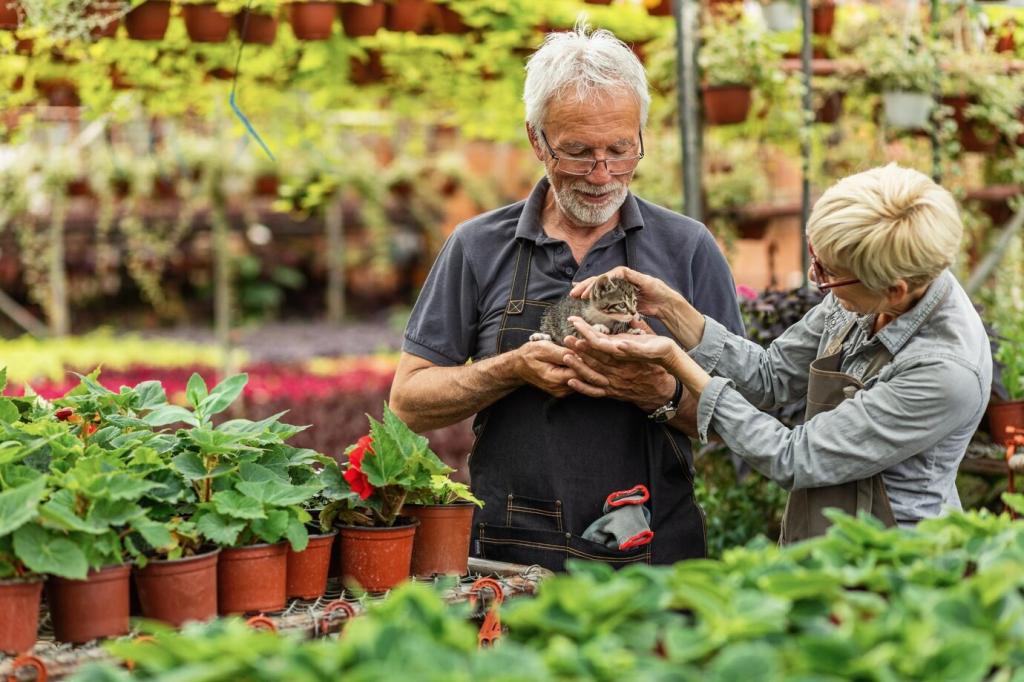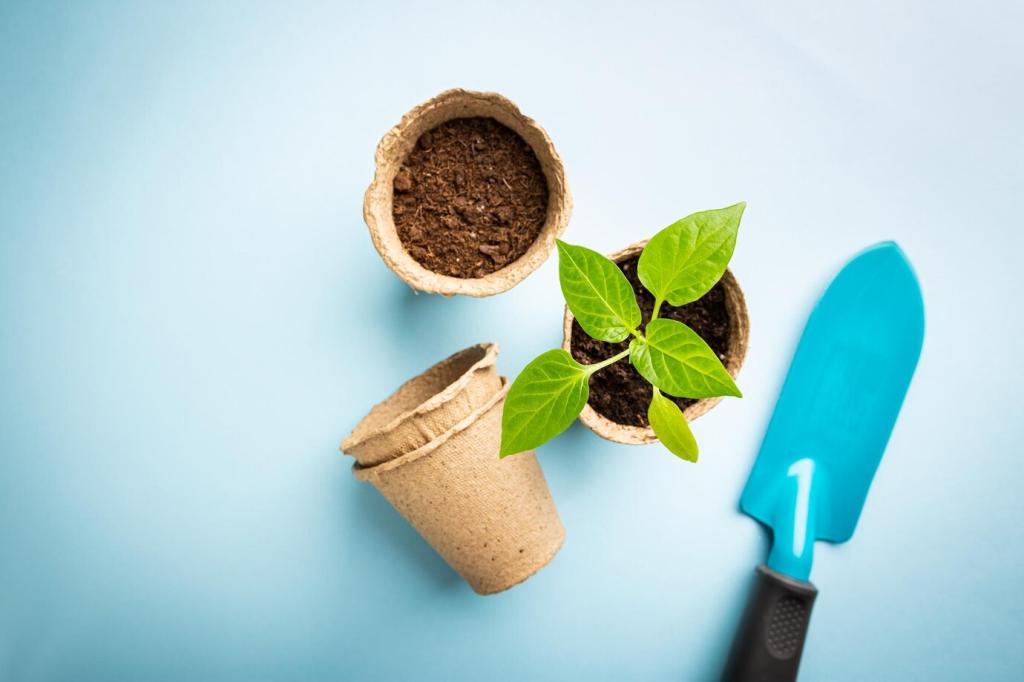Understanding Wildlife-Friendly Garden Certification: Your Path to a Lively, Biodiverse Backyard
Chosen theme: Understanding Wildlife-Friendly Garden Certification. Welcome! Here you’ll find practical guidance, heartfelt stories, and step-by-step inspiration to turn your outdoor space into a certified refuge for birds, pollinators, and small mammals. Subscribe to follow new tips, share your habitat wins, and ask questions as you grow your garden into a thriving sanctuary.

What Wildlife-Friendly Garden Certification Really Means
Core Principles: Food, Water, Cover, and Places to Raise Young
Most certification programs revolve around four habitat essentials: reliable food sources, clean water, protective cover, and safe nesting areas. Add sustainable practices—like limiting chemicals and conserving water—and you’ve built a resilient micro‑ecosystem. Comment with which pillar you already have and which one you plan to improve first.
Who Offers Certification?
In the United States, the National Wildlife Federation’s Certified Wildlife Habitat program is widely recognized. Many regions also run municipal or conservation‑group certifications, and native plant societies may offer local guidance. Ask in the comments where you garden, and we’ll point you toward a relevant certifier to explore.
Why It Resonates
Maya, a new homeowner, added a birdbath, swapped three shrubs for natives, and left a tidy brush corner. Within weeks, goldfinches and a shy wren arrived. That sign on her fence wasn’t just metal—it became a neighborhood conversation starter. Share your first wildlife sighting story to motivate other readers.
Native Plants: The Foundation of a Certified Habitat
Aim for vertical diversity: canopy trees, understory shrubs, and flowering groundcovers. This layering creates microclimates and season‑long resources. Birds forage at different heights, pollinators find nectar across months, and small mammals hide between layers. Post your current plant layers, and we’ll suggest a simple gap‑filling addition.

Water Sources That Work for Wildlife and Certifiers
Use a shallow basin with a gentle slope, add a few stones for perching, and refresh water every few days. Moving water, like a small solar bubbler, attracts birds and discourages mosquitoes. Comment with your maintenance routine, and we’ll suggest simple tweaks to keep water clean and inviting year‑round.

Water Sources That Work for Wildlife and Certifiers
Butterflies and bees drink from shallow, mineral‑rich puddles. Fill a saucer with sand, add water to dampness, and tuck in flat stones for safe footing. Replace water regularly and avoid fertilizers nearby. Share your station style—terracotta or repurposed dish—and subscribe for seasonal micronutrient blends to test.


Shelter and Nesting: From Brush Piles to Boxes
Stack pruned branches loosely to create airy shelter for birds and beneficial insects. Keep piles away from structures, and anchor with logs for stability. Leave a snag (standing dead wood) if safe—woodpeckers and cavity nesters rely on it. Post your available materials, and we’ll map an ideal location.
Shelter and Nesting: From Brush Piles to Boxes
Choose species‑appropriate entrance sizes, untreated wood, and ventilation. Mount boxes at correct heights, facing safe directions, and clean annually. Avoid overcrowding to reduce competition. Comment with target species—bluebirds, chickadees, or owls—and we’ll share a sizing guide aligned with certification best practices.
Sustainable Practices: Soil, Chemicals, and Climate
Pesticide-Free Is Powerful
Skip broad‑spectrum insecticides and herbicides that disrupt food webs. Embrace tolerance thresholds, hand‑picking, and habitat balance so predators can help you. If you must intervene, target only the issue and spot‑treat. Comment with a recurring pest, and we’ll recommend wildlife‑safe tactics that align with certification.
Smart Water, Smarter Soil
Deep, infrequent watering trains roots and saves water. Drip irrigation minimizes evaporation; mulch protects soil life. Add compost to improve structure and biodiversity. Report your watering schedule, and we’ll help optimize timing and depth—small changes that support wildlife and strengthen your certification application.
Mulch, Compost, and Carbon
Leaf mold, wood chips, and home compost feed soil microbes and lock in moisture. They also store carbon in your landscape. Avoid dyed mulches; choose natural, local materials. Share what you have on hand, and subscribe for a seasonal soil‑building plan tailored to your garden’s habitat goals.
The Certification Process: From Yard to Official Sign
Take clear photos of food plants, water sources, shelter, and nesting spots. Keep a simple list of species observed and sustainable practices used. Save plant tags or a map. Share your draft evidence set, and we’ll offer tips to make it airtight and aligned with certifier expectations.
Review criteria, confirm you meet each requirement, then submit photos and details online. Be honest about seasonal features and plans in progress; many programs value intention and maintenance. Comment with your chosen program, and we’ll highlight any nuances to strengthen your submission before you click send.
When your sign arrives, place it where neighbors will see it. Host a small garden walk, share plant lists, and invite questions. Your story can spark another habitat. Post your celebration photo, and subscribe for a template flyer that explains your certified features in friendly, accessible language.

Monitoring, Storytelling, and Continuous Improvement
Keep a Simple Wildlife Log
Record dates, species, behaviors, and weather. Use a notebook, spreadsheet, or apps like eBird and iNaturalist to contribute community data. Patterns will guide plant choices and maintenance. Share your latest sightings, and we’ll suggest enhancements that match the wildlife already exploring your yard.
Seasonal Tune-Ups That Matter
Spring: add nectar and nesting materials. Summer: water reliability and deadheading for continuous bloom. Fall: seed heads and leaf cover. Winter: structure and unfrozen water. Comment with your climate zone, and we’ll send a four‑season tune‑up tailored to your certification goals and timelines.
Share Your Story, Inspire a Neighbor
Post before‑and‑after photos and name the species that returned because of your changes. Real stories turn abstract goals into action. Invite questions, and be generous with mistakes and lessons. Subscribe to be featured in our community spotlight highlighting certified gardens and the people who nurture them.
